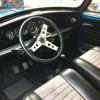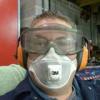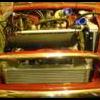I have 12G1505A crankshaft and apparently this is 1275cc - Non-S, EN16T with 1.75" dia. big ends.
It is already -0,020 and I will need to go to -0,040 for my engine.
I plan to take off big chunks of steel form cranckshaft around big ends as per Vizard's sketches and to do balancing.
I have a chance to do Nitriding very cheap (almost for nothing) but the guy told me that results depends on the type of the steel and it can improve but also decrease the strength. He said if the crank was Nitrided from the factory means material is good for Nitriding and it will be stronger.
"T" in the number stands for Tuftriding so it means this crank was tuftrided before but does it means Nitriding will also help.
What is the real difference in practice?
And what are the chances to make it worst that it is?
Same question goes for conrods since I plan to lighten them and balance and Nitriding is basically for free so question is to take it or not?
What I found:
Nitriding
The part is heated in a nitrogen-rich environment, usually a gas (ammonia) or a powder bath (the Tenifer process) - very hard but also brittle.
Tuftriding
This method is similar to nitriding except that nitrogen and carbon are introduced into the surface of the work piece - very hard but much less brittle - much better shock resistance!!




















